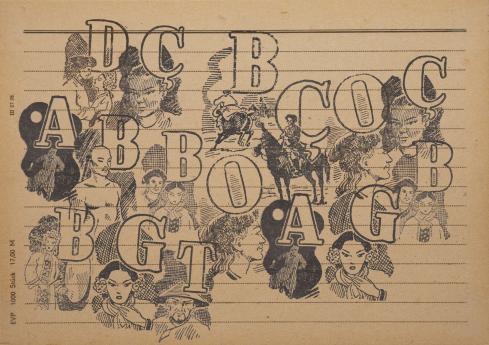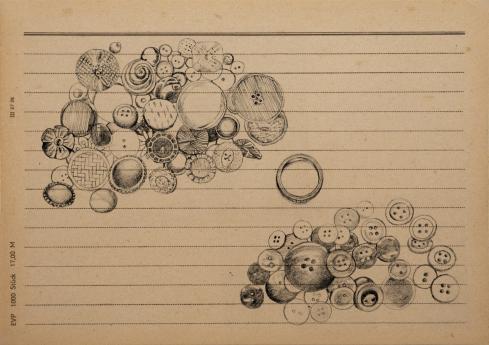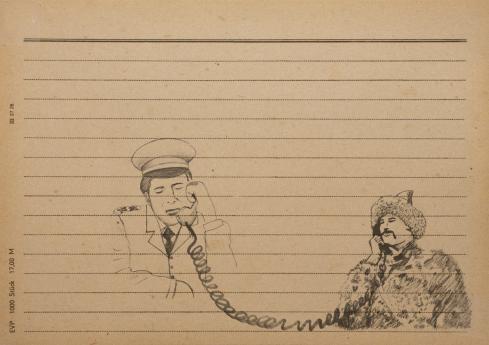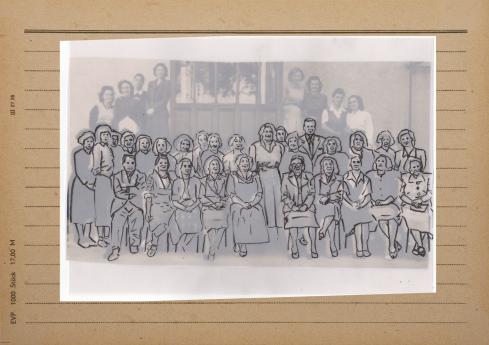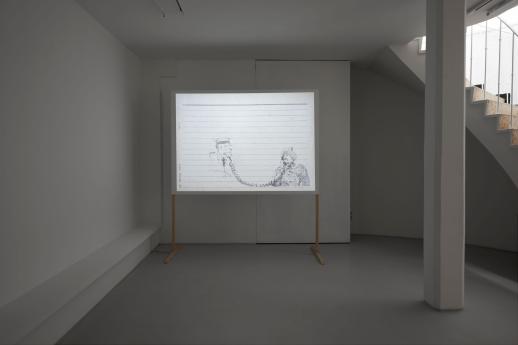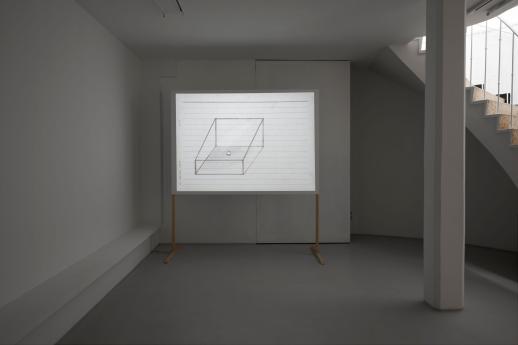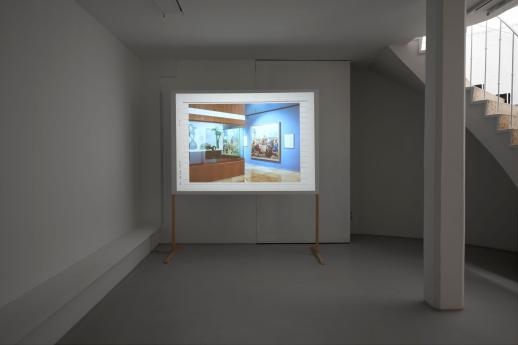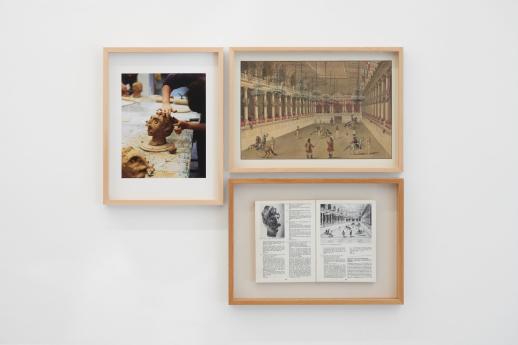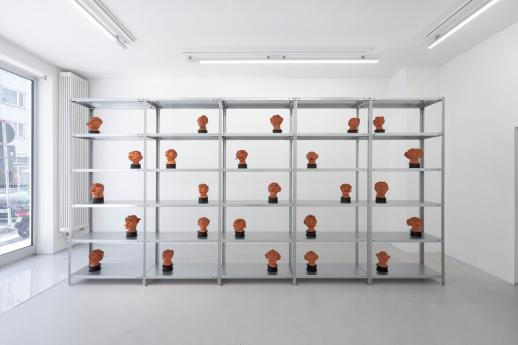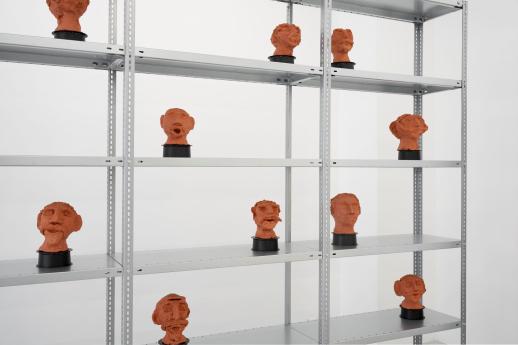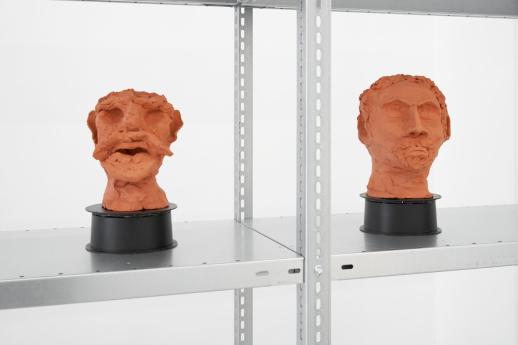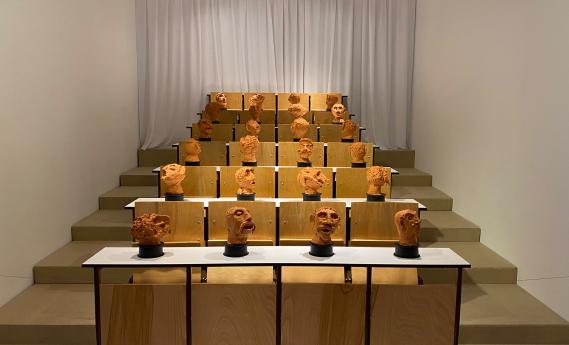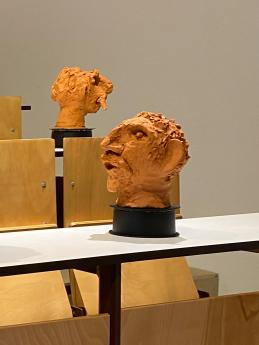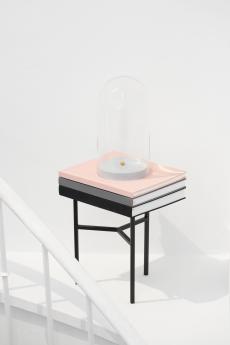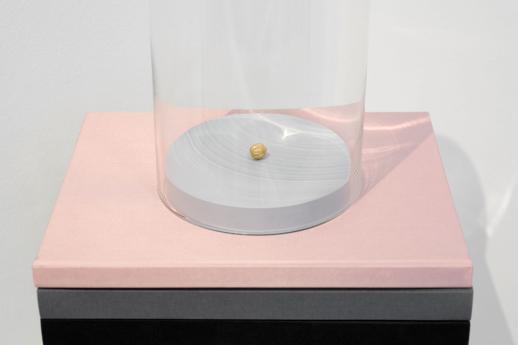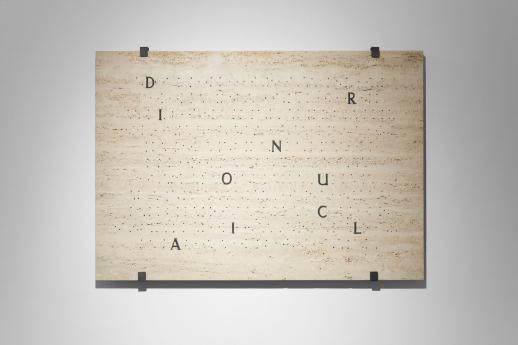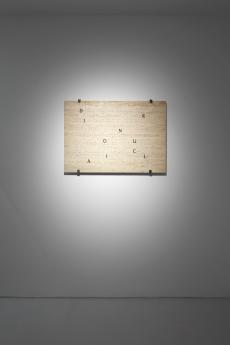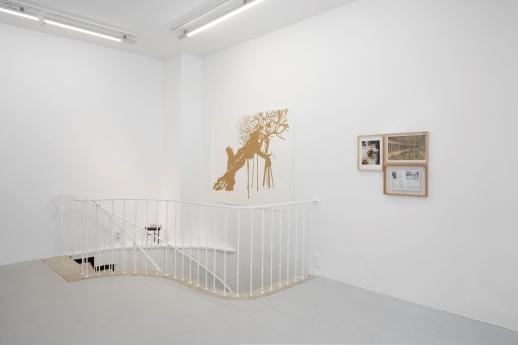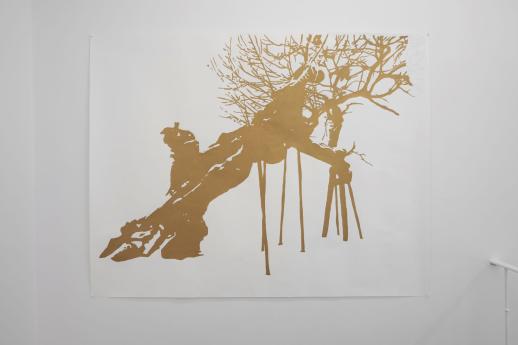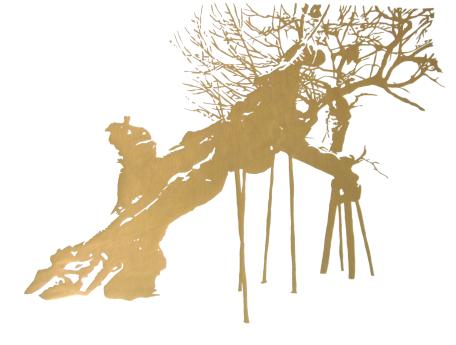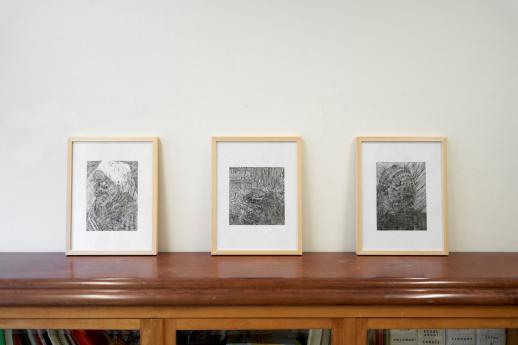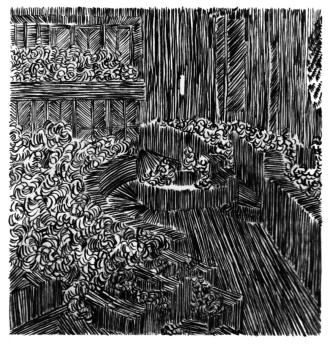ESRA ERSEN / HERITAGE
EVANTHIA TSANTILA / SUBURBIA
VARIOUS OTHERS 2022:
Esra Ersen / Heritage
Evanthia Tsantila / Suburbia
„Alle Vorfahren sind wie Früchte an den Ästen der Bäume,“ reflektiert der Schriftsteller Pascal Quignard über die Art, wie Zeit als Vergangenheit vergegenwärtigt wird. Da ist zum einen die Vorstellung der Unumkehrbarkeit der Zeit (die Toten kehren nicht wieder zurück) und zum anderen die Rückkehr der Zeit (die sich wiederholenden Jahreszeiten). Hieraus folgen verschiedene Formen von Vergangenheit: Eine, „die man bestatten muss, die man unter Steinen begraben, in Dolmen beisetzen [...] muss.“ Also eine, „die man versucht, ein für allemal loszuwerden.“ Eine andere Vergangenheit, „die eine Abwärtsbewegung darstellen soll, errichtet auf zwei Achsen, die sich ausgehend vom rekursiven, himmlischen, jahreszeitlichen Kreislauf gegenüberstehen, der das tierische, das vegetative, das soziale Leben jährlich wiederkehren lässt.“ Also eine „Vergangenheit, die es zurückzuholen gilt.“ Das Zyklische und das Unumkehrbare der Zeit überlagern sich in dieser Ausstellung.
Wie der Zeit enthoben glänzt der Baum aus goldener Tinte von Evanthia Tsantila. Ihre Tuschearbeit „Suburbia“ (2005) fixiert einen schräg wachsenden Baum, der trotz menschengemachter Stützen unter seinem Gewicht zusammenzubrechen droht. Anders als in der Malerei des Mittelalters benutzt Evanthia Tsantila das Gold nicht als idealen Raumgrund, sondern lässt das Bildsujet aufleuchten. Dem alten (vielleicht sogar sterbenden) Baum aus einer urbanen Situation verleiht das Gold den Nimbus des paradiesischen. „Wie ist das Palimpsest der Jahrhunderte in den Körper des Baumes eingeschrieben?“, fragt die Künstlerin. Einer Schatulle gleich bewahrt der Baum unter seiner Rinde die Spuren der Zeit. Mit jedem seiner Ringe zählt er die Jahre. Die Spur wird, so fasst es Quignard zusammen, zu einer Stätte. Evanthia Tsantila wiederum lässt den Baum zu einer Kultstätte irdischer und jenseitiger Narrative der Vergangenheit werden.
Unter politischen Gesichtspunkten widerspricht die Künstlerin Esra Ersen der Unumkehrbarkeit der Zeit. Denn Geschichte wiederholt sich und mit ihr kehren zu rassistischen Stereotypen verdichtete Bilder des Feindes zurück. Einen solchen Zyklus greift ihre Installation „Karussell“ (1998) auf. Als Ausgangspunkt dieser Arbeit steht eine kolorierte Radierung aus dem Jahr 1814. In der Winterreitschule, einem Gebäudetrakt der Wiener Hofburg, stechen Reiter als Teil einer Parade die im Reitsaal verteilten Attrappen von Türkenköpfen auf. Dieses Motiv wurde Gegenstand eines Projekts an einem Kölner Gymnasium, in dessen Verlauf die Schüler*innen ihre eigenen Vorstellungen „der Türken“ modellieren sollten.
Zwei Vergangenheiten ließen sich für Quignard einander gegenüberstellen. Eine Vergangenheit als eine Gotteserscheinung (Theophanie), die andere als Trauer. Der Prozess des Nation-Building scheint beide Momente gleichermaßen in sich zu bergen. In Esra Ersens Videoinstallation „A Possible History – Turkish Heroes, Chinese Knick Knacks“ (2015) durchwandert die Erzählstimme E. die Rezeptionen von Vergangenheit der Türkei. Sie folgt den Mythologien, die der Staat, bzw. das Militär über das Militärmuseum der Bevölkerung erzählt. Geschichten von stets kämpfenden türkischen Helden und ihren Siegen, die zu Konstruktionen des Selbstbildes der modernen türkischen Nation, deckungsgleich mit der Ethnie der Türken, instrumentalisiert wurden und werden. Die Giganten des nationalen Selbstverständnisses, wie Alp Arslan, Fatih (Mehmed II.) und Atatürk, schrumpfen im Souvenirshop des Museums zu spielzeugartigen Fanartikeln. Die Theophanie und Trauer in gleichzeitigen Momenten der Perspektive auf die Vergangenheit werden in Esra Ersens Arbeit sichtbar und in ihrer Widersprüchlichkeit erfahrbar.
Gürsoy Doğtaş
––––––––––––––––––––––––––––––––––––––––––––––––––––––––––––––––––––––––––––––––––––
VARIOUS OTHERS 2022:
Esra Ersen / Heritage
Evanthia Tsantila / Suburbia
“All ancestors are like fruit on tree branches,” the writer Pascal Quignard reflects on the way time is envisioned as the past. On the one hand, there is the idea of the irreversibility of time (the dead do not return), and on the other, the return of time (the ever-repeating seasons of the year). From this, different forms of the past can be deducted: one “that has to be buried, buried under stones, buried in dolmens [...].” That is, one “that needs to be disposed of once and for all.” Another past is “intended to represent a downward movement, built on two axes that face each other, stemming from the recursive, celestial, seasonal cycle that allows the animal, vegetative, and social life to return every year.” Thus, a “past that is to be retrieved.” The cyclical and the irreversibility of time overlap in this exhibition.
As if taken out of time, gleams Evanthia Tsantila’s tree made out of golden ink. Her ink work “Suburbia” (2005) fixes an obliquely growing tree that threatens to collapse under its own weight despite its supporting man-made braces. Unlike paintings of the Middle Ages, Evanthia Tsantila does not use gold as an ideal background but allows the picture’s subject to shine. The gold bestows the old (possibly even dying) tree, which is situated within an urban environment, with the aura of paradise. “How is the palimpsest of centuries inscribed into the tree’s body?” asks the artist. Like a casket, the tree keeps the traces of time under its bark. It counts the years with each of its rings. The trace becomes, as Quignard sums it up, a site. Evanthia Tsantila, on the other hand, turns the tree into a place of worship for earthly and otherworldly narratives from the past.
From a political point of view, the artist Esra Ersen contradicts the irreversibility of time. Since history repeats itself and with this images of the enemy have been condensed into racist stereotypes. Her installation “Karussell” (1998) picks up on such a cycle. At the centre of this work, a coloured etching from 1814 can be found. In the riding hall, a part of the Winterreitschule, located in one of the wings of the Vienna Hofburg, riders, who are part of a parade, can be seen impaling the heads of Turks. This motif became the subject of a project at a high school in Cologne, in the course of which the pupils were to mould their own ideas of “the Turks.”
For Quignard, the juxtaposition of two different pasts is possible; one past form as an appearance of God (theophany), the other one as mourning. The nation-building process seems to contain both moments equally. In Esra Ersen’s video installation “A Possible History – Turkish Heroes, Chinese Knick Knacks” (2015), the narrator E. wanders through the reception of Turkey's past. It follows the mythologies the state or the military tells its population about the military museum. Stories of continually fighting Turkish heroes and their victories, which were and are instrumentalised to construct the self-image of the modern Turkish state, are congruent with the ethnicity of the Turkish people. The giants of a national identity, such as Alp Arslan, Fatih (Mehmed II), and Atatürk, are reduced to toy-like fan articles in the museum’s souvenir shop. In Esra Ersen’s work and its contradictoriness, theophany and mourning can be experienced simultaneously as two perspective moments on the past.
Gürsoy Doğtaş
Esra Ersen ( → Artist Website)
/
Biography
Solo Exhibitions
Rehabilitation / 300m3 Art space, Göteborg, Sweden
Group Exhibitions
4. Liverpool Biennale
Manifesta 4, The Europan Biennial of Contemporary Art, Frankfurt
please visit the artists website for
GROUP EXHIBITIONS
